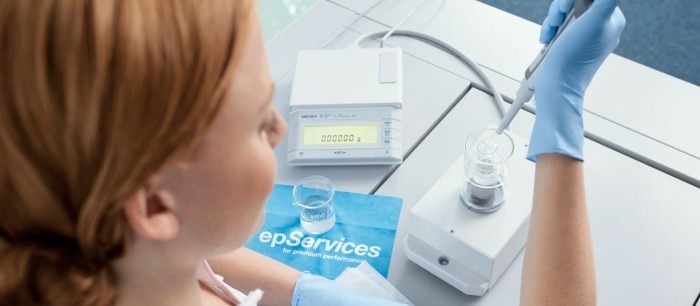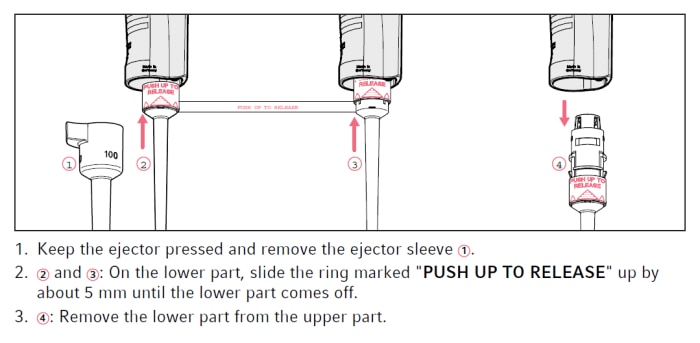MENU
AR | ARS
AR | ARS
No results found
Search Suggestions

Is Calibration of Pipettes After Autoclaving Mandatory?
Lab Academy
- Microbiology
- Cell Biology
- Maintenance & Calibration
- Pipetting & Dispensing
- Dispensers
- Pipettes
- Essay
Calibration of pipettes is a necessary procedure to guarantee accuracy and precision for all pipetting activities. But it is also time-consuming and expensive. The tenacious rumor that pipettes must be calibrated after autoclaving is circulating in labs. Is it true, or just an ancient story?
When pipettes suffer from contamination by bacteria, fungi and mycoplasma, autoclaving is a secure method of inactivating the contamination before cleaning the pipette [1]. But not every pipette can be autoclaved without dismounting. Sometimes only the lower part of a pipette can be autoclaved and sometimes the whole pipette is not heat-stable, so this sterilization method is inappropriate. Therefore, when working with bacteria, fungi or mycoplasma, make sure that your pipettes can be autoclaved without dismounting.
When regular autoclaving of pipettes to maintain sterility and cleanliness is demanded, easy handling is even more important. When using electronic pipettes at least the lower part should be removable and autoclavable. This simplifies daily lab routine and proper maintenance a lot. Once cleanliness of the pipette is restored, the fear of a changed precision of the pipette due to heat-sterilization rises. You might fear that plastic parts swelled during heat-sterilization and pipette calibration needs to be repeated. A pipette calibration is a time-consuming, but necessary procedure. It is ideally done by a well-established pipette service provider to guarantee accurate and precise pipetting results. And a calibration needs to be done in a special environment with special equipment. However, whether a pipette needs recalibration after autoclaving depends on the materials it is made from. Autoclavable materials do not swell or change configurations during heat-sterilization, therefore the calibration is unaffected. So, check if the pipettes used are autoclavable which is often stated in the specifications or the operating manual of a pipette. If you cannot find the answer in the documents, your sales representative should be able to answer your questions.
Considering which pipette model to buy in advance can simplify your sterilization routine, save time and money. Here’s a little hint: mechanic Eppendorf pipette models Research® plus and Reference® 2 can be autoclaved in one piece without recalibration. And the lower part of electronic Eppendorf Xplorer®/Xplorer plus is removable and autoclavable as well. Recalibration is not necessary.
[1] Uphoff CC, Drexler HG. CELL CULTURE MYCOPLASMAS. DSMZ – German Collection of Microorganisms and Cell Cultures
When regular autoclaving of pipettes to maintain sterility and cleanliness is demanded, easy handling is even more important. When using electronic pipettes at least the lower part should be removable and autoclavable. This simplifies daily lab routine and proper maintenance a lot. Once cleanliness of the pipette is restored, the fear of a changed precision of the pipette due to heat-sterilization rises. You might fear that plastic parts swelled during heat-sterilization and pipette calibration needs to be repeated. A pipette calibration is a time-consuming, but necessary procedure. It is ideally done by a well-established pipette service provider to guarantee accurate and precise pipetting results. And a calibration needs to be done in a special environment with special equipment. However, whether a pipette needs recalibration after autoclaving depends on the materials it is made from. Autoclavable materials do not swell or change configurations during heat-sterilization, therefore the calibration is unaffected. So, check if the pipettes used are autoclavable which is often stated in the specifications or the operating manual of a pipette. If you cannot find the answer in the documents, your sales representative should be able to answer your questions.
Considering which pipette model to buy in advance can simplify your sterilization routine, save time and money. Here’s a little hint: mechanic Eppendorf pipette models Research® plus and Reference® 2 can be autoclaved in one piece without recalibration. And the lower part of electronic Eppendorf Xplorer®/Xplorer plus is removable and autoclavable as well. Recalibration is not necessary.
[1] Uphoff CC, Drexler HG. CELL CULTURE MYCOPLASMAS. DSMZ – German Collection of Microorganisms and Cell Cultures
Read more
Read less

Related document

Essay
PDF 0.51 MB
Related links
- Read more about different types of contaminations
- FAQs
- Pipette Calibration Service
Read more
Read less
